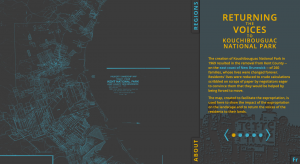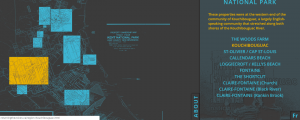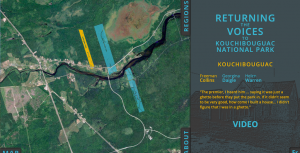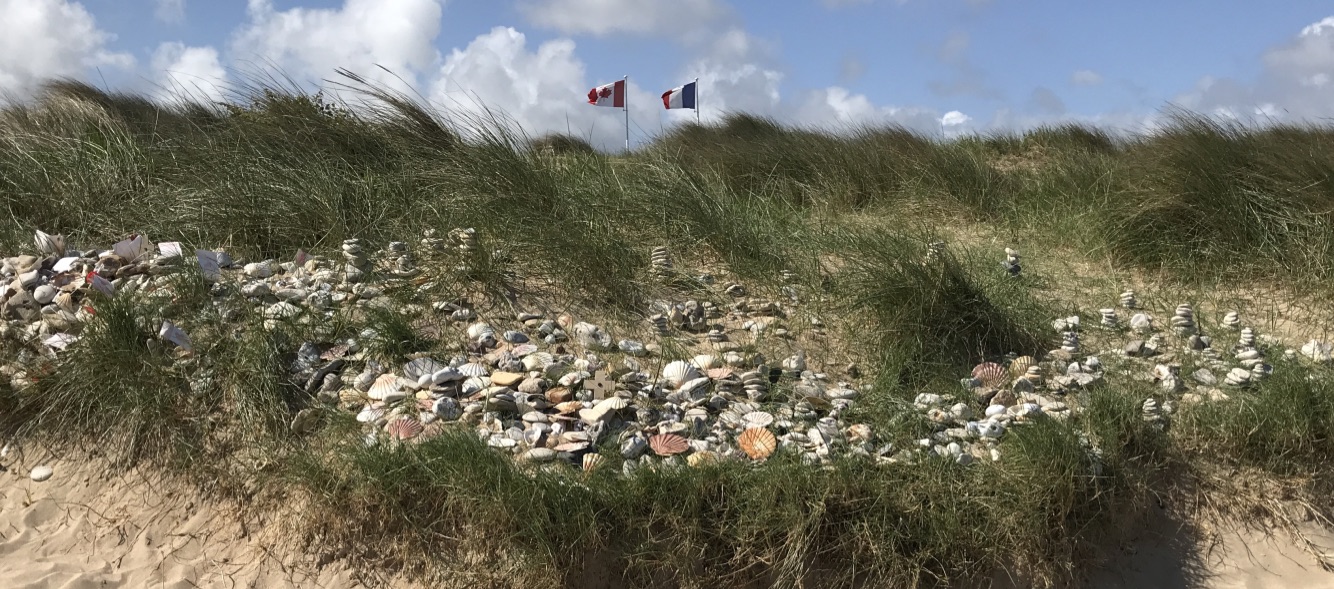For this blog post I chose to look at “Returning the Voices to Kouchibouguac National Park” as I have always have an interest and relatively strong opinions about both Canadian and American National park systems.
The website is a public history project with the goal to document the former residents’ accounts about the 1969 expropriation of land by the Government of Canada and Government of New Brunswick to create Kouchibouguac National Park. The site serves the purpose to show the impact the expropriation had on the land. As well to document the former resident’s experience through videos. The website was created in 2013 by Ronald Rudin with collaboration with Philip Lichti and was financially supported by Social Sciences and Humanities Research Council of Canada and the Trudeau Foundation. The website draws its information largely through Rudin’s book Kouchibouguac: Removal, Resistance and Remembrance at a Canadian National Park and thirty interviews from former residents of the park. The website can be viewed in French and English, as well many of the interviews are conducted in French with English captions, which makes the site accessible to both . The site is also dedicated to the former residents who contributed to the website. 
The first screen to appear on the website is a brief description of the Governments of Canada and New Brunswick decision to create the Kouchibougac National Park, and the project’s overall goal. It then pivots to an overall map of the park with two tabs,“about” and “regions”. Initially I found the website to be slightly overwhelming, as I never really had prior experience dealing with public history websites and I felt out of my element. However, as I got more familiar with the project I find the website to be rather straightforward as one tab leads the user to the next section.
The “About” tab explains the goal of the site and the creators. But also allows for the user to click on links, the first link redirects to google maps in the browser and shows exactly where the present day National Park is in New Brunswick, which if you are like me is useful as I am not well acquainted with the province. It also provides a background on media that has been produced about the expropriation and gives links for additional information. It also provides links to the New Brunswick Provincial archives.

This is the area that is now accessible, without drowning? Here’s a few steps that one can take to prevent death. http://www.icks.org/data/ijks/1482459755_add_file_2.pdf generic cialis online
The “regions” section (as seen above) presents ten different sections of the park which the user can select. As you move the cursor over the different regions, the panel explains the community and the people who were situated in that area and where they once had resided.

After clicking on a region, the site brings you to the section as seen above, with the aerial photo of the park along with a highlighted section of land where the residents once lived. Once being redirected to this page a number of names appear under the region, by clicking on the “video” option under the names the site redirects the user to an interview with a former resident of the park. During the interviews, former residents will occasionally show photos pre-dating the expropriation or there is a slide show of those photos playing to a voice over of former residents. This provides visual aid, as it shows how the park looked before it became the present park. In the section “Claire-Fontaine” there were interviews conducted about the Clubhouse in the community. In the section “Loggiecroft/Kelly’s Beach” Kenneth Stewart discusses the fishing industry before the park was created. This gives the viewer a better understanding that it wasn’t necessarily just their homes the residents had to leave but also a well established community.
The website provides the user a well-rounded explanation of what its goals are and why the website was established. It offers an impactful history of the national park, giving the public an understanding of what occurred for the creation of this national park. As a public, we tend to think of national parks having positive connotations as they protect ecological, cultural and natural values. However, there is never much thought to the people who resided in these regions before the establishment of these parks, such as the case with Kouchibouguac National Park. The website’s content is valuable as it allows for the families who were expropriated to have a platform to voice their experience before and during the park’s creation. The Government of Canada’s website for Kouchibouguac National Park does focus on the expropriation in their “History and Culture” section of the website which states “Moreover, the park is committed to honoring and commemorating the history of the people whose homes were expropriated at the time of park creation.” The government of Canada website also shares how these former residents settled in surrounding communities and have become staff at the park. “Returning the Voices to Kouchibouguac National Park” is informative and representative.
